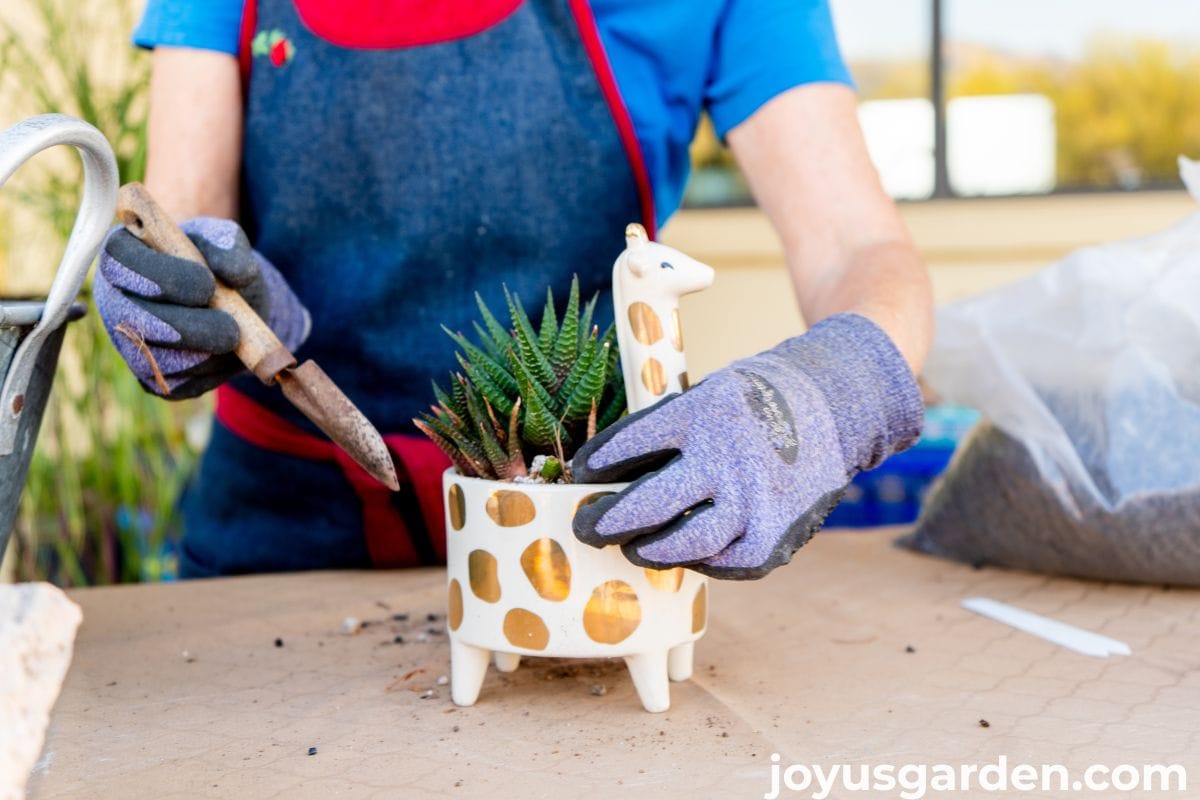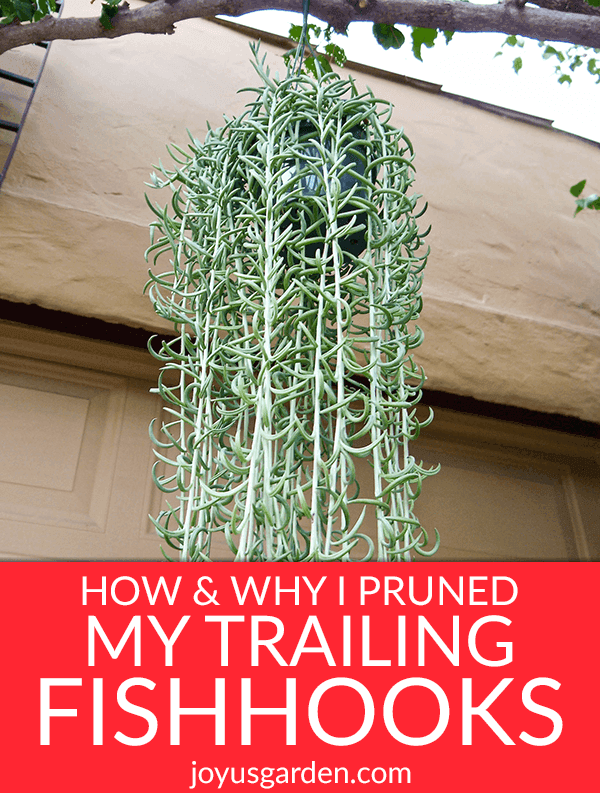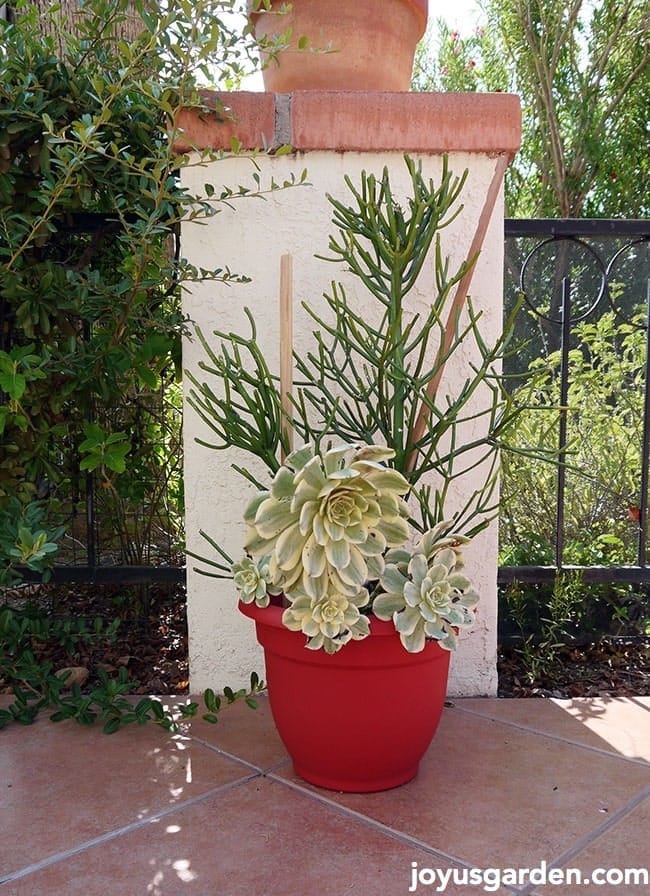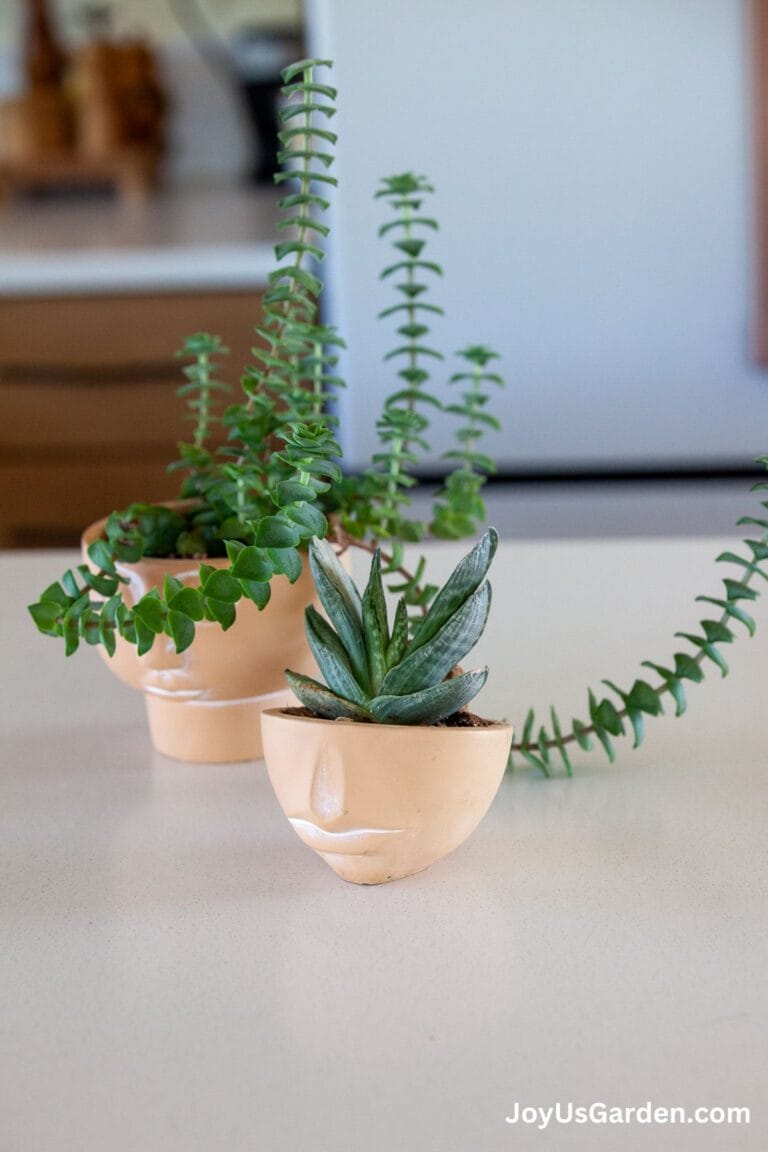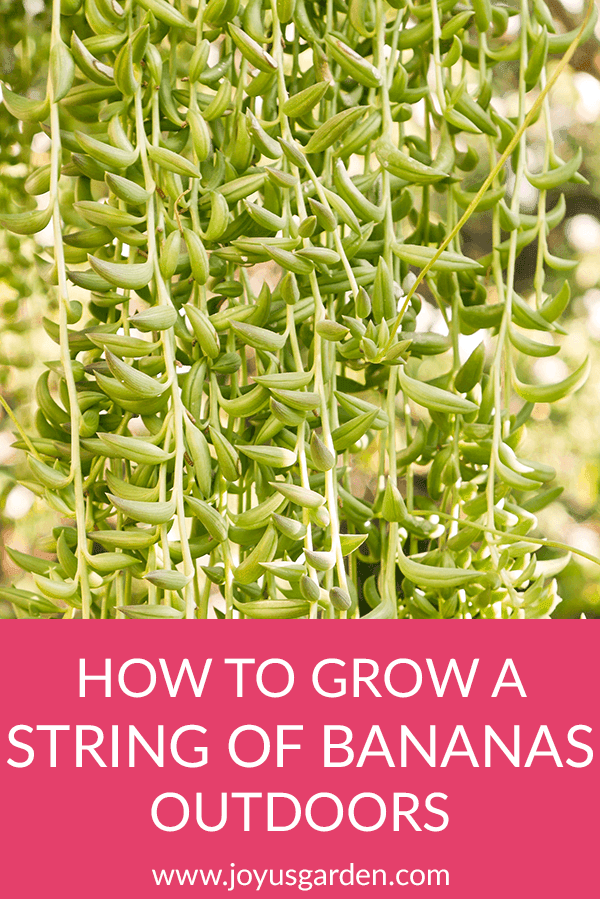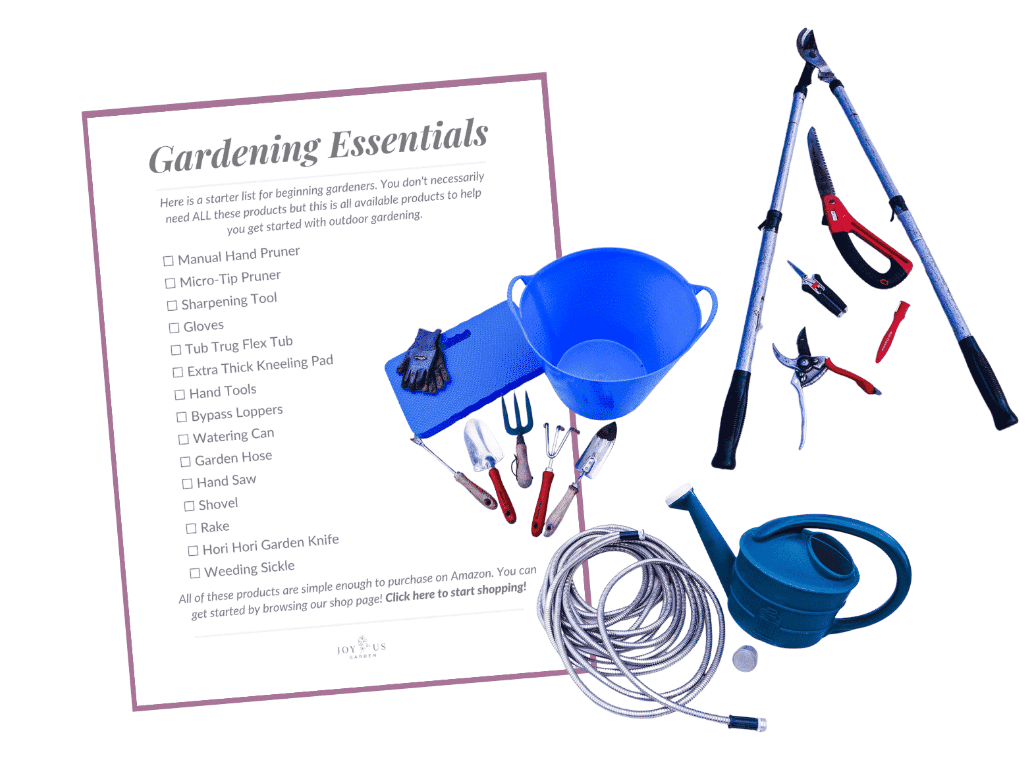Zebra Succulent Care: A Beginner’s Haworthia Growing Guide
Do you have your eye on this cute little plant, or have you already brought one home and wondered what to do next? I’ve been growing zebra plants for over 25 years, and they’re still one of my all-time favorite succulents. With its white stripes and chunky little pointed leaves, a zebra succulent is compact and extremely easy to care for—even if you’re brand new to plants.
Zebra Plants aren’t just adorable—they’re tough little survivors that can handle a bit of forgetfulness and keep growing strong. From how much light and water they need to soil and propagation, we cover it all here. These are great plants for beginning gardeners (as long as you don’t water them too often!)
Botanical Name: Haworthiopsis attenuata Common Name: Zebra Plant, Zebra Cactus, Zebra Succulent, Zebra Haworthia
Note: The genus of this plant has been reclassified from Haworthia to Haworthiopsis. You’ll see both names used, and many people (and plant shops) still call it Haworthia, which is why I’ve used that name in the title of this post —it’s more familiar and easier to search. There’s Haworthiopsis fasciata and Haworthia attenuata. Both are similar in appearance and have the same common name. To keep things interesting, another houseplant called a Zebra Plant (Aphelandra squarrosa) looks completely different. If you’re confused, you’re not alone!
Zebra Succulent Care Guide
The Zebra Plant is the most commonly grown Haworthia in the houseplant trade. This care post applies to the majority of Haworthias and Haworthiopsis.
Size
They range in height from 6 – 10″. They spread, and the width can vary depending on the pot size. I have one that’s in a 3.5″ pot and is 7″ wide. Another grows in a 7″ oval pot and is 13″ x 9″ wide.
Uses
These are tabletop plants. The fact that they stay small makes them ideal for tight indoor spaces. I have multiples of this plant – on my desk, a table, floating shelves, a kitchen island, and two on my covered patio.
Growth Rate
Slow. This is what I like about them. I have plenty of plants that grow fast, need repotting, a new decorative pot, and perhaps a new spot to grow in. A Zebra Cactus can stay in the same pot and location for years.
Light Requirements
Zebra Plants do best in bright, indirect light. Keep them out of direct sunlight, especially in a hot, sunny window, because too much intense light can scorch their leaves.
While they prefer brighter spots, zebra plants can tolerate lower light conditions. Keep in mind: if they aren’t getting adequate light, you’ll notice them getting thinner and weaker, and their leaves turning pale and small.
Since most indoor plants only get light from one direction (most are placed near a wall), it’s a good idea to rotate your succulent plant every few months. This helps it grow more evenly and keeps it looking its best from all sides.
Here are problems you may have growing succulents indoors.
Water Requirements
When it comes to succulents like the zebra plant, less water is better than more water. I can’t give you an exact watering schedule because it depends on your home’s light, temperature, pot size, soil composition, and time of year. The key is to wait until the soil has completely dried before watering again.
A well-draining, airy soil mix and a pot with at least one drainage hole are your best defense against root rot. Most of mine live in 3–5″ pots, and here in sunny, warm Tucson, AZ, I usually water them about every two weeks. If the soil’s dry, and your plant looks happy, you’re probably doing fine!
For more info, here’s a guide to watering succulents indoors.
Temperature
I have three planters of Haworthias growing in shaded spots in my Tucson garden year-round, and they do just fine.
These little succulents are tough and can handle a wide range of temperatures, so they’ll do great inside your home.
Humidity
Haworthias come from some of the driest regions of South Africa, so they’re built to handle dry conditions. That means they do fine with average indoor humidity.
Fertilizing/Feeding
Succulents aren’t needy, but they do appreciate the nutrient boost. The growing season is the best time to do it.
How often you feed your succulents depends on what fertilizer you’re using and your climate. I live in a sunny climate with a long growing season. During this period, I feed my succulents monthly (seven times). Depending on your growing zone, two to three times might be fine for your succulents.
I like a water-soluble fertilizer, either liquid or granular. I don’t use a special fertilizer; I use the same ones for all my other houseplants – Grow Big, Maxsea, and Sea Grow. There are also fertilizers specially formulated for succulents and cacti.
Here are six important tips for growing succulents indoors.
Pruning
These plants don’t require pruning. After flowering, I cut off the dead stalks. A leaf will die once in a blue moon, and I can usually pull it off.
Soil
Succulent soil needs to have good drainage and aeration. Using the proper mix ensures healthy roots, contributing to a healthy plant.
It’s best not to use regular potting mix because it holds water, and succulents don’t like too much moisture. A well-draining cactus and succulent mix is a much better choice since it dries out faster and helps prevent root rot. If your mix is too heavy, add pumice or perlite to make it even lighter and more breathable.
More on the best soil for succulents, including the mix I use for all my succulents indoors and outdoors.
Repotting
Like pruning and fertilizing, spring and summer into early fall are the best times.
Succulents don’t mind growing tight in their pots. Haworthias are no exception. They do great in small pots and can stay in them for years. The more room they have to spread, the wider they’ll get.
Generally, go up one pot size, for instance, from a 3″ pot to a 4″ pot. Make sure the new pot you’re using has drainage holes so the water can readily flow out.
This post will explain the steps to planting succulents in small pots. There’s a video, too.
Propagation
I’ve always had success propagating zebra plant succulents by division. My friends have gotten many pots full of them! This method means separating the baby plants (pups) from the base of the parent plant. You want to make sure the pup has at least one root of its own, and then gently pull it away and replant it in succulent mix.
While division is the most common method, you can also try propagating from a single healthy leaf, though it’s a much slower process and doesn’t always work as well with Haworthias. For beginners, division is an easy and reliable way to grow more of these cute plants.
If you’re new to propagating succulents, this guide will help you.
Pests
Succulents grown indoors are prone to pests, especially mealybugs. One of my Zebras got mealybugs, and I treated them with rubbing alcohol and a cotton swab.
They can also be prone to spider mites, scale, and aphids. If the infestation is mild, a spray with the kitchen faucet or garden hose should get rid of them. For heavier infestations, I use insecticidal soap.
Flowering
This plant isn’t popular for its flowers. The tiny white flowers grow off long, thin stems. Zebra succulents usually bloom in late spring to early summer, though the timing can vary depending on the conditions they’re grown in. The ones I grow outdoors bloom yearly, but only one of my indoor zebra plants has ever flowered.
Pet Safety
Haworthias are considered to be non-toxic to pets. I get my info from the ASPCA.
Zebra Succulent FAQs
Why are the leaves of my Zebra Plant succulent turning brown and mushy?
The most likely cause is overwatering. Zebra plants don’t like sitting in soggy soil, and too much moisture can lead to root rot and mushy leaves. Make sure to let the soil dry out completely between waterings, and always use a pot with a drainage hole so excess water can escape. Also, avoid misting—these succulents don’t need it, and too much moisture on the leaves indoors can cause problems.
Can I use a grow light for my Zebra Plant?
I grow all my houseplants in natural light, so I’m not well-versed on this subject. If your home doesn’t get much sun, a small grow light can help your Zebra stay healthy and happy, especially during the darker winter months.
Can a Zebra Plant go outside?
Yes, I have three planters with Zebra Plants growing on my north-facing covered patio year-round here in Tucson. Make sure they’re not growing in direct sun and shelter them from excessive rain. If you’re in a cold climate, bring them in before the temps dip below 40F.
Can I plant a Zebra Plant with other succulents?
They look awesome in a succulent arrangement with other small plants. Make sure they all have the same light and water needs. Here’s more info on creating and caring for a succulent arrangement.
Do you have more questions about growing succulents indoors? This post will answer them!
Conclusion: Whether you’re brand new to plants or already deep into the world of succulents, Zebras are a favorite for good reason. They’re tough, low-maintenance, seriously stylish with those bold little stripes, and can tuck into tight spaces. With the right light and a little water, your zebra succulent will thrive—and even grow a few baby plants along the way!
Happy gardening,
Nell
Want to learn more about succulents indoors? Check out these guides!
- How to Choose Succulents and Pots
- Small Pots for Succulents
- How to Water Indoor Succulents
- 6 Most Important Succulent Care Tips
- Hanging Planters for Succulents
- 13 Common Succulent Problems and How to Avoid Them
- How to Propagate Succulents
- Succulent Soil Mix
- 21 Indoor Succulent Planters
- How to Repot Succulents
- How To Prune Succulents
- How To Plant Succulents In Small Pots
- Planting Succulents In A Shallow Succulent Planter
- How to Plant and Water Succulents in Pots Without Drain Holes
- How To Make & Take Care Of An Indoor Succulent Garden

